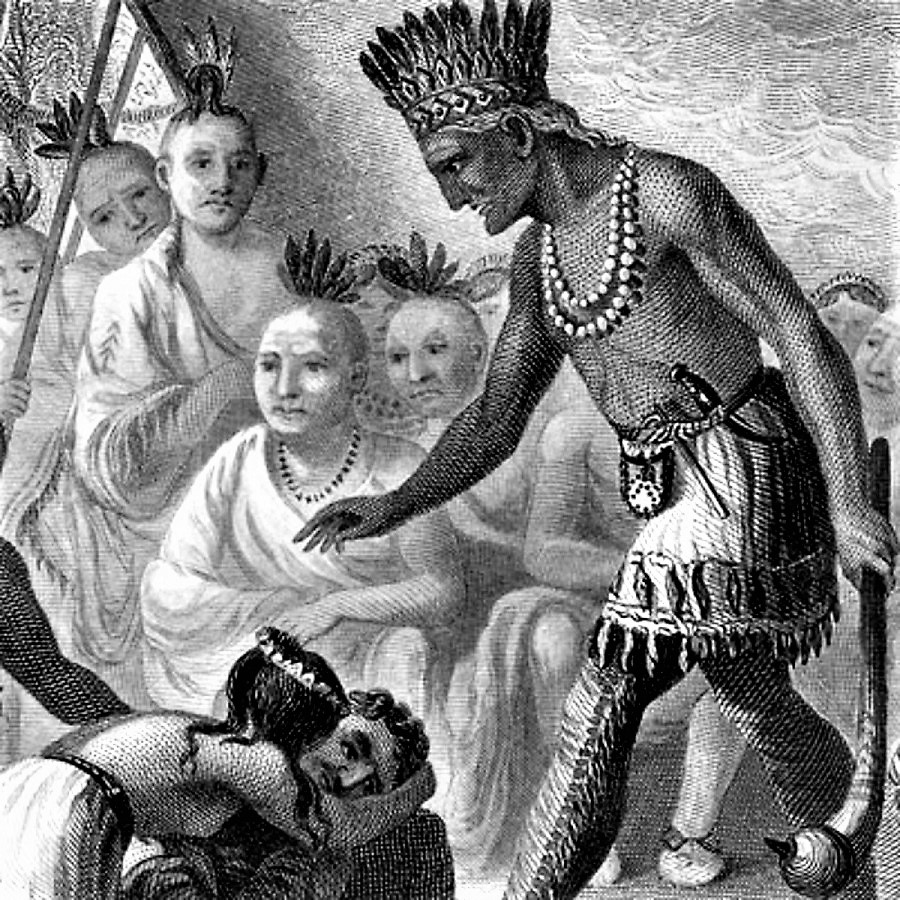Exploring The Rich Heritage Of The Powhatan Tribe
The Powhatan Tribe, a prominent Native American group, holds a significant place in the history of the United States. Known for their intricate social structures and rich cultural traditions, the Powhatan people have a legacy that dates back centuries. Located primarily in the Virginia region, this tribe played a crucial role during the early colonial period, especially in relation to the English settlers, including the famous story of Pocahontas. Understanding the Powhatan Tribe's history, culture, and impact on American society provides valuable insight into the complexities of Native American life before and after European contact.
As the Powhatan Tribe navigated the challenges of European colonization, they maintained their cultural identity and traditions, despite facing significant obstacles. The tribe's relationship with settlers was marked by both cooperation and conflict, which ultimately shaped their future. Today, the Powhatan Tribe continues to thrive, preserving their heritage while adapting to modern society. Their story is one of resilience and strength, showcasing the enduring spirit of Native American communities across the nation.
In this article, we will delve deeper into the history, culture, and significance of the Powhatan Tribe. Through various sections, we will explore important questions about their origins, social structure, and the impact they had on early American history. Join us as we uncover the fascinating world of the Powhatan people and their lasting legacy.
What is the Origin of the Powhatan Tribe?
The Powhatan Tribe, originally known as the Powhatan Confederacy, was a group of Algonquian-speaking tribes that inhabited Virginia. The name "Powhatan" refers to both the tribe and its leader, Chief Powhatan, who was the father of Pocahontas. The origins of the Powhatan people can be traced back to the early 1600s, when they were the dominant group in the region. The Confederacy consisted of about 30 tribes, each with its own chief, but all were united under the leadership of Chief Powhatan.
How Did the Powhatan Tribe Organize Their Society?
The Powhatan Tribe had a complex social structure that included a chiefdom system. At the top was the chief, followed by lesser chiefs who governed their respective tribes. The society was matrilineal, meaning that lineage was traced through the mother’s side. This structure allowed women to hold significant power within the tribe, often overseeing agricultural practices and family affairs.
- Chief Powhatan: The paramount chief of the Powhatan Confederacy.
- Lesser Chiefs: Leaders of individual tribes within the confederacy.
- Women’s Roles: Women played vital roles in agriculture and decision-making.
What Were the Cultural Practices of the Powhatan Tribe?
The Powhatan Tribe's culture was rich with traditions, storytelling, and rituals. They were skilled in agriculture, growing crops such as corn, beans, and squash, which were staples of their diet. Additionally, they engaged in hunting and fishing, utilizing the abundant natural resources in the region. The Powhatan people also practiced various ceremonies, including those for harvest and warfare, which were integral to their cultural identity.
What Was the Impact of European Colonization on the Powhatan Tribe?
The arrival of English settlers in the early 1600s marked a turning point for the Powhatan Tribe. Initially, there were attempts at trade and cooperation; however, tensions soon escalated. The settlers' encroachment on Powhatan lands led to conflicts, including the Anglo-Powhatan Wars. These confrontations ultimately resulted in significant loss of life and land for the Powhatan people, altering their way of life forever.
How Did Pocahontas Influence the Powhatan Tribe's History?
Pocahontas, the daughter of Chief Powhatan, became a pivotal figure in the history of the Powhatan Tribe and the English settlers. Her interactions with the settlers, particularly her marriage to John Rolfe, helped establish a temporary peace between the two groups. Pocahontas's story symbolizes the complex relationship between Native Americans and Europeans during this time, highlighting themes of diplomacy, conflict, and cultural exchange.
What Is the Current Status of the Powhatan Tribe?
Today, the Powhatan Tribe continues to preserve its cultural heritage while adapting to modern society. Various organizations and tribal councils work tirelessly to promote awareness of their history and traditions. The tribe is recognized as a sovereign nation and is actively involved in initiatives to reclaim their land and rights. Efforts to educate the public about their culture and history remain a priority for the Powhatan people.
How Can We Support the Powhatan Tribe Today?
Supporting the Powhatan Tribe and other Native American communities can take many forms. Here are some ways individuals can contribute:
- Education: Learn about their history and culture to raise awareness.
- Advocacy: Support policies that protect Native American rights and lands.
- Visiting Tribal Lands: Respectfully visit tribal lands and support local economies.
- Engagement: Participate in cultural events and initiatives that promote Native American heritage.
In conclusion, the Powhatan Tribe's history is a testament to their resilience and adaptability. As we explore their rich cultural heritage, it is essential to recognize the ongoing challenges they face and to support their efforts in preserving their legacy. The story of the Powhatan Tribe is not just a chapter in American history but a living narrative that continues to evolve today.
Unveiling The Legacy Of General Grant: A Leader Of Valor
Exploring The Complex Legacy Of Ghaddafi
Unveiling The Life And Legacy Of Marcos Imelda


